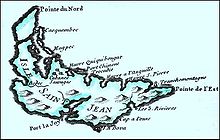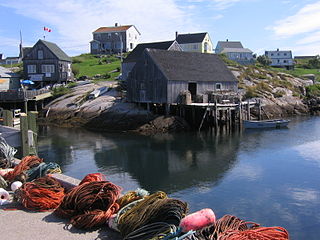
The Maritimes, also called the Maritime provinces, is a region of Eastern Canada consisting of three provinces: New Brunswick, Nova Scotia, and Prince Edward Island. The Maritimes had a population of 1,899,324 in 2021, which makes up 5.1% of Canada's population. Together with Canada's easternmost province, Newfoundland and Labrador, the Maritime provinces make up the region of Atlantic Canada.
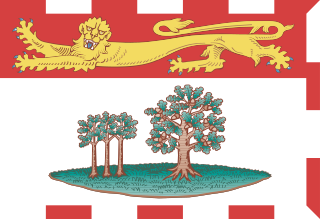
Prince Edward Island is one of the thirteen provinces and territories of Canada. While it is the smallest province in terms of land area and population, it is the most densely populated. The island has several nicknames: "Garden of the Gulf", "Birthplace of Confederation" and "Cradle of Confederation". Its capital and largest city is Charlottetown. It is one of the three Maritime provinces and one of the four Atlantic provinces.

The Acadians are an ethnic group descended from the French who settled in the New France colony of Acadia during the 17th and 18th centuries. Most Acadians live in the Northern American region of Acadia, as it is the region where the descendants of a few Acadians who escaped the Expulsion of the Acadians re-settled. Most Acadians in Canada continue to live in majority French-speaking communities, notably those in New Brunswick where Acadians and Francophones are granted autonomy in areas such as education and health.

Acadia was a colony of New France in northeastern North America which included parts of what are now the Maritime provinces, the Gaspé Peninsula and Maine to the Kennebec River. During much of the 17th and early 18th centuries, Norridgewock on the Kennebec River and Castine at the end of the Penobscot River were the southernmost settlements of Acadia. The French government defined the borders of Acadia as roughly between the 40th and 46th parallels on the Atlantic coast. It was eventually divided into British colonies. The population of Acadia included the various indigenous First Nations that comprised the Wabanaki Confederacy, the Acadian people and other French settlers.

The Expulsion of the Acadians is the term used for the forced removal between 1755 and 1764 by Britain of inhabitants of the North American region historically known as Acadia. It included the modern Canadian Maritime provinces of Nova Scotia, New Brunswick, and Prince Edward Island, along with the U.S. state of Maine. The Expulsion occurred during the French and Indian War, the North American theatre of the Seven Years' War.
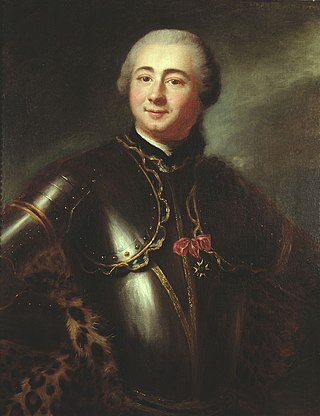
Charles Deschamps de Boishébert was a member of the Compagnies Franches de la Marine and was a significant leader of the Acadian militia's resistance to the Expulsion of the Acadians. He settled and tried to protect Acadians refugees along the rivers of New Brunswick. At Beaubears National Park on Beaubears Island, New Brunswick he settled refugee Acadians during the Expulsion of the Acadians.

The Acadians are the descendants of 17th and 18th century French settlers in parts of Acadia in the northeastern region of North America comprising what is now the Canadian Maritime Provinces of New Brunswick, Nova Scotia and Prince Edward Island, the Gaspé peninsula in eastern Québec, and the Kennebec River in southern Maine.

The Hillsborough River, also known as the East River, is a Canadian river in northeastern Queens County, Prince Edward Island.

Abbé Jean-Louis Le Loutre was a Catholic priest and missionary for the Paris Foreign Missions Society. Le Loutre became the leader of the French forces and the Acadian and Mi'kmaq militias during King George's War and Father Le Loutre's War in the eighteenth-century struggle for power between the French, Acadians, and Miꞌkmaq against the British over Acadia.

Skmaqn–Port-la-Joye–Fort Amherst is a National Historic Site located in Rocky Point, Prince Edward Island.

The siege of Annapolis Royal in 1744 involved two of four attempts by the French, along with their Acadian and native allies, to regain the capital of Nova Scotia/Acadia, Annapolis Royal, during King George's War. The siege is noted for Governor of Nova Scotia Paul Mascarene successfully defending the last British outpost in the colony and for the first arrival of New England Ranger John Gorham to Nova Scotia. The French and Mi'kmaq land forces were thwarted on both attempts on the capital because of the failure of French naval support to arrive.
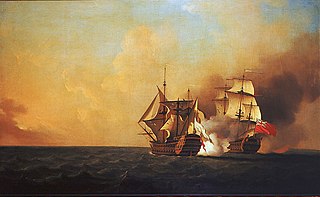
The Duc d'Anville expedition was sent from France to recapture Louisbourg and take peninsular Acadia. The expedition was the largest military force ever to set sail for the New World prior to the American Revolutionary War. This effort was the fourth and final French attempt to regain the Nova Scotian capital, Annapolis Royal, during King George's War. The Expedition was also supported on land by a force from Quebec under the command of Jean-Baptiste Nicolas Roch de Ramezay. Along with recapturing Acadia from the British, d'Anville was ordered to "consign Boston to flames, ravage New England and waste the British West Indies." News of the expedition spread fear throughout New York and New England.
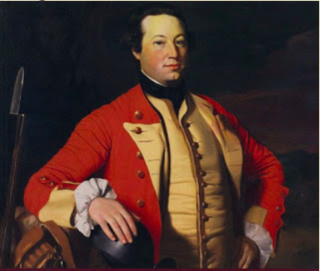
The Petitcodiac River campaign was a series of British military operations from June to November 1758, during the French and Indian War, to deport the Acadians that either lived along the Petitcodiac River or had taken refuge there from earlier deportation operations, such as the Ile Saint-Jean campaign. Under the command of George Scott, William Stark's company of Rogers Rangers, Benoni Danks and Gorham's Rangers carried out the operation.
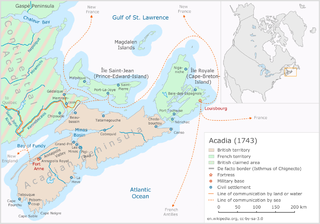
Father Le Loutre's War (1749–1755), also known as the Indian War, the Mi'kmaq War and the Anglo-Mi'kmaq War, took place between King George's War and the French and Indian War in Acadia and Nova Scotia. On one side of the conflict, the British and New England colonists were led by British officer Charles Lawrence and New England Ranger John Gorham. On the other side, Father Jean-Louis Le Loutre led the Mi'kmaq and the Acadia militia in guerrilla warfare against settlers and British forces. At the outbreak of the war there were an estimated 2500 Mi'kmaq and 12,000 Acadians in the region.

The Acadian Exodus happened during Father Le Loutre's War (1749–1755) and involved almost half of the total Acadian population of Nova Scotia deciding to relocate to French controlled territories. The three primary destinations were: the west side of the Mesagoueche River in the Chignecto region, Isle Saint-Jean and Île-Royale. The leader of the Exodus was Father Jean-Louis Le Loutre, whom the British gave the code name "Moses". Le Loutre acted in conjunction with Governor of New France, Roland-Michel Barrin de La Galissonière, who encouraged the Acadian migration. A prominent Acadian who transported Acadians to Ile St. Jean and Ile Royal was Joseph-Nicolas Gautier. The overall upheaval of the early 1750s in Nova Scotia was unprecedented. Present-day Atlantic Canada witnessed more population movements, more fortification construction, and more troop allocations than ever before in the region. The greatest immigration of the Acadians between 1749 and 1755 took place in 1750. Primarily due to natural disasters and British raids, the Exodus proved to be unsustainable when Acadians tried to develop communities in the French territories.

The Battle at Port-la-Joye was a battle in King George's War that took place with British against French troops and Mi'kmaq militia on the banks of present-day Hillsborough River, Prince Edward Island in the summer of 1746. French officer Jean-Baptiste Nicolas Roch de Ramezay sent French and Mi'kmaq forces to Port-la-Joye where they surprised and defeated a force of 200 Massachusetts militia in two British naval vessels that were gathering provisions for recently captured Louisbourg.

Nova Scotia is a Canadian province located in Canada's Maritimes. The region was initially occupied by Mi'kmaq. The colonial history of Nova Scotia includes the present-day Maritime Provinces and the northern part of Maine, all of which were at one time part of Nova Scotia. In 1763, Cape Breton Island and St. John's Island became part of Nova Scotia. In 1769, St. John's Island became a separate colony. Nova Scotia included present-day New Brunswick until that province was established in 1784. During the first 150 years of European settlement, the colony was primarily made up of Catholic Acadians, Maliseet, and Mi'kmaq. During the last 75 years of this time period, there were six colonial wars that took place in Nova Scotia. After agreeing to several peace treaties, the long period of warfare ended with the Halifax Treaties (1761) and two years later, when the British defeated the French in North America (1763). During those wars, the Acadians, Mi'kmaq and Maliseet from the region fought to protect the border of Acadia from New England. They fought the war on two fronts: the southern border of Acadia, which New France defined as the Kennebec River in southern Maine, and in Nova Scotia, which involved preventing New Englanders from taking the capital of Acadia, Port Royal and establishing themselves at Canso.

The siege of Annapolis Royal in 1745 involved the third of four attempts by the French, along with their Acadian and native allies, to regain the capital of Nova Scotia/Acadia, Annapolis Royal, during King George's War. During the siege William Pote was taken prisoner and wrote one of the rare captivity narratives that exist from Nova Scotia and Acadia.

The military history of the Acadians consisted primarily of militias made up of Acadian settlers who participated in wars against the English in coordination with the Wabanaki Confederacy and French royal forces. A number of Acadians provided military intelligence, sanctuary, and logistical support to the various resistance movements against British rule in Acadia, while other Acadians remained neutral in the contest between the Franco–Wabanaki Confederacy forces and the British. The Acadian militias managed to maintain an effective resistance movement for more than 75 years and through six wars before their eventual demise. According to Acadian historian Maurice Basque, the story of Evangeline continues to influence historic accounts of the expulsion, emphasising Acadians who remained neutral and de-emphasising those who joined resistance movements. While Acadian militias were briefly active during the American Revolutionary War, the militias were dormant throughout the nineteenth century. After confederation, Acadians eventually joined the Canadian War efforts in World War I and World War II. The most well-known colonial leaders of these militias were Joseph Broussard and Joseph-Nicolas Gautier.

The Ile Saint-Jean campaign was a series of military operations in fall 1758, during the Seven Years' War, to deport the Acadians who either lived on Ile Saint-Jean or had taken refuge there from earlier deportation operations. Lieutenant-Colonel Andrew Rollo led a force of 500 British troops to take possession of Ile Saint-Jean.

